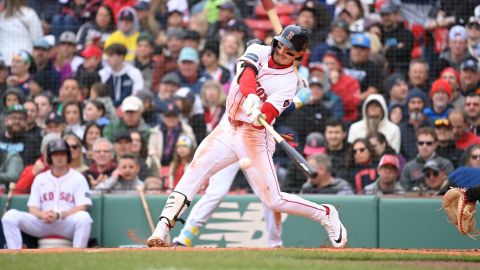The Red Sox' outfield overhaul this past winter was among the many debates surrounding the team's offseason. After signing Mike Cameron in December, the club announced plans to move young speedster Jacoby Ellsbury to left and then watched as prognosticators, fans and critics took their shots.
Two months into the season, Cameron and Ellsbury were almost nonfactors, both sidelined for the bulk of the campaign with injuries. It rendered moot much of the debate.
In addition, their journeys back to health have been pitted with potholes, forcing Ellsbury back to the disabled list after just three games and Cameron into a battery of tests to determine the cause of soreness he had just days after he returned from the DL with an abdominal strain.
Their ailments, along with others on the team, have filled manager Terry Francona's days with health-related questions from reporters, only some of which he is qualified to answer.
"Our first responsibility has got to be to the team," Francona recently said when addressing the process by which an injured player is diagnosed and treated.
By that, Francona meant that the information the media gets is often just a small portion of what takes place. The "tests" we hear about could mean a wide variety of activities. "Soreness" might indicate an everyday ache or the precursor to a stint on the disabled list. "Progress" could mean that a player went from walking to jogging, but is nowhere near returning.
Ultimately, Francona makes the call on whether a player sits or plays, so long as said player is active. But as the skipper acknowledges countless times during the course of a season, he is not a doctor, and deferring to those who are is what makes the process work. The lines of communication are always open.
The absences of Ellsbury and Cameron forced right fielder J.D. Drew, who is accustomed to getting a day off here and there, into everyday duty, despite nagging pain in parts of both legs. The difference between Drew and his colleagues is that he is wrestling with wear and tear, while the others are legitimately injured.
But even Drew's condition involves a heavy dose of discussion. As Francona repeatedly has said when giving players a day off here and there to address everyday ailments, "You don't want to run someone into the ground where one day [off] becomes three or four."
For most of us, working out comes with the possibility of an occasional muscle pull or strain. While we might be conditioned to just "tough it out," experts say that if the pain is severe enough that it interferes with normal activities and lasts for more than a few days, you should see a doctor.
"A health care provider can evaluate you for a more serious condition like a broken bone," said Dr. Arun Ramappa, chief of sports medicine at Beth Israel Deaconess Medical Center. "In the case of back pain, if you have weakness or numbness of the leg, you need to seek medical attention to assess for nerve compression. If there is any bladder or bowel dysfunction, you should see a doctor immediately."
For weekend warriors, staying on top of physical ailments is important, but for the pros, communication of anything out of the ordinary is critical — from player to coach, coach to trainer, trainer to doctor, doctor to player. It is a cycle of information sharing that, when broken, can lead to awkward and potentially damaging scenarios.
Such was the case in 2009, when starting pitcher Daisuke Matsuzaka did not divulge a hip strain suffered before the 2009 World Baseball Classic. His subsequent season with the Red Sox was marred by time on the DL, and Matsuzaka went from being an 18-game winner to a 4-6 pitcher with a whole host of question marks.
The pitcher and the team were on the same page this spring (the lack of a WBC had a lot to do with it), and when Matsuzaka's neck flared up in mid-March, he was up-front with team officials. What followed was a methodical rehabilitation, first in Fort Myers, Fla., and then at Triple-A Pawtucket.
This time, Matsuzaka returned after missing just one month, and he matched his 2009 win total one month after that. Now, he's back on the DL.
Every player is different, from their bodies to their roles, but the uniformity of the process allows the team to handle each of them the same when it comes to injuries.
"We try to use good judgment," Francona said.



